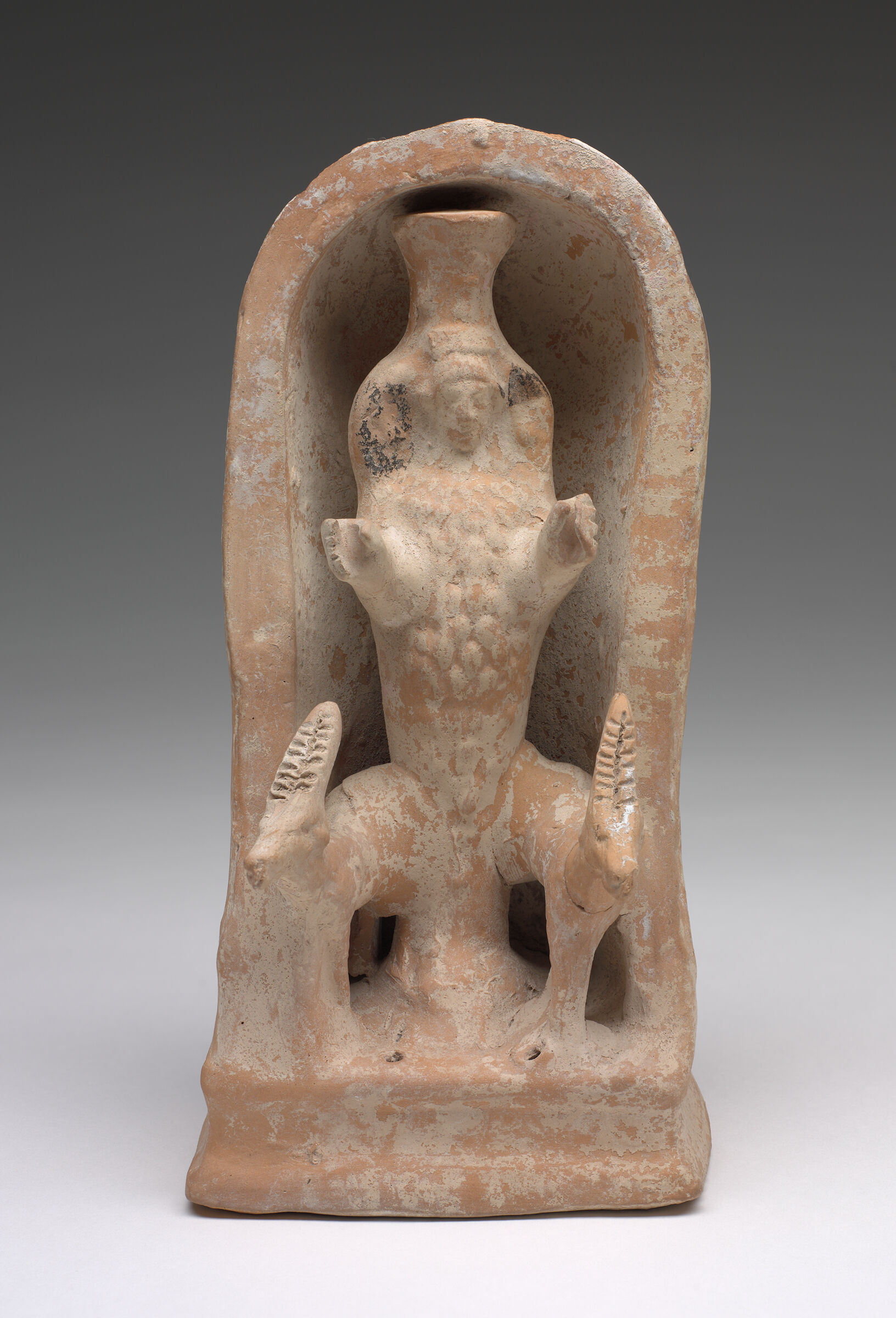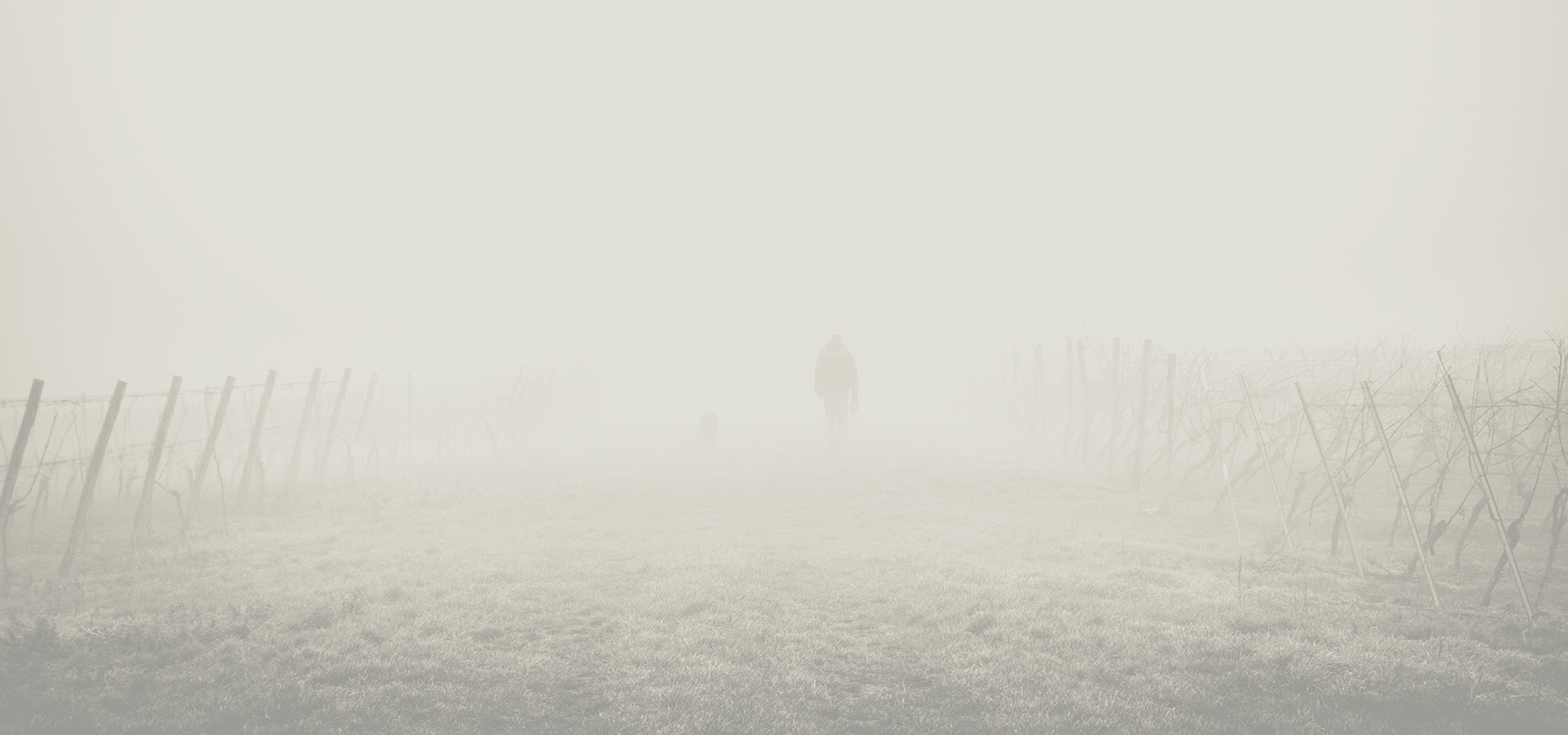
This terracotta statuette group is a representation of the Artemis of Ephesos. The goddess stands frontally, arms held out from her sides. She wears a high headdress (kalathos), and behind her head is a billowing veil or nimbus; her garment is long and close fitting, covered in the central section by a cluster of globular objects generally identified as breasts. The lower part of the garment, although now very worn, may have had panels with raised depictions of animals in imitation of the cult statues of the goddess. On either side of the goddess stands a stag. The stags are rather cursorily modeled; their antlers are depicted almost like a large feather above the head, with a row of incised lines on either side of a central incision. The goddess and animals are enclosed in a round-topped niche, standing on a rectangular base with molding depicted on the top and bottom, possibly in imitation of the settings of larger statues of the goddess. The style of the whole is fairly simple and schematic and the surface is partly worn. The head of one of the stags was broken and mended. Traces of white slip and black paint remain. The different sections of the statuette group were made separately and assembled before firing. Commentary The form, attributes, and iconography of Artemis as she was worshipped in Ephesos is unusual in the context of the classical Graeco-Roman Artemis/Diana, who is otherwise represented as a virgin huntress. At Ephesos, syncretism associated the Greek Artemis with the iconography and aspects of an earlier deity who had a clear connection with fertility. Other large- and small-scale representations of Ephesian Artemis are known in marble, bronze, and terracotta, but the niche surrounding the goddess and stags is perhaps unique to this object. The temple of Artemis at Ephesos was acknowledged in antiquity as one of the Seven Wonders of the World.
Author: Roman Imperial period, Middle | Date: 2nd century CE

